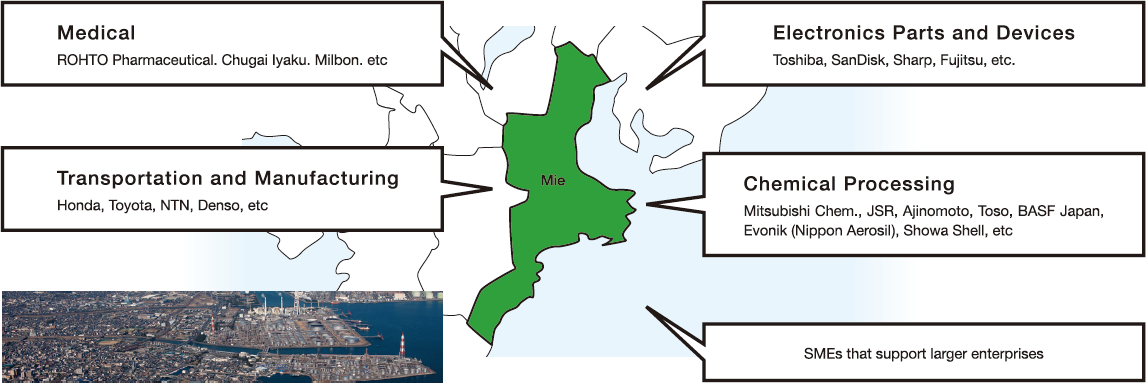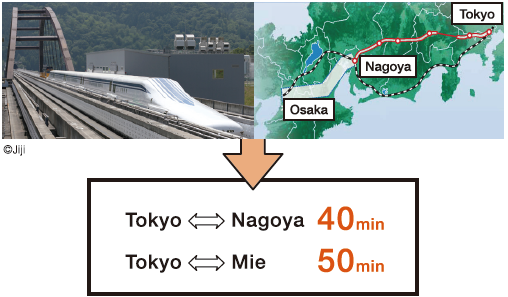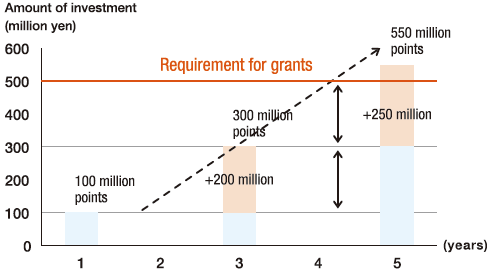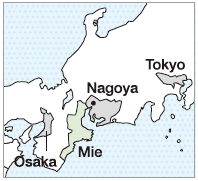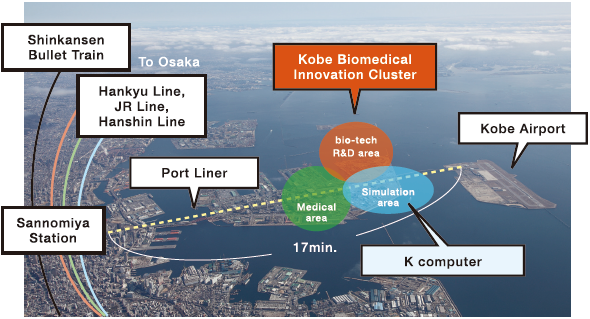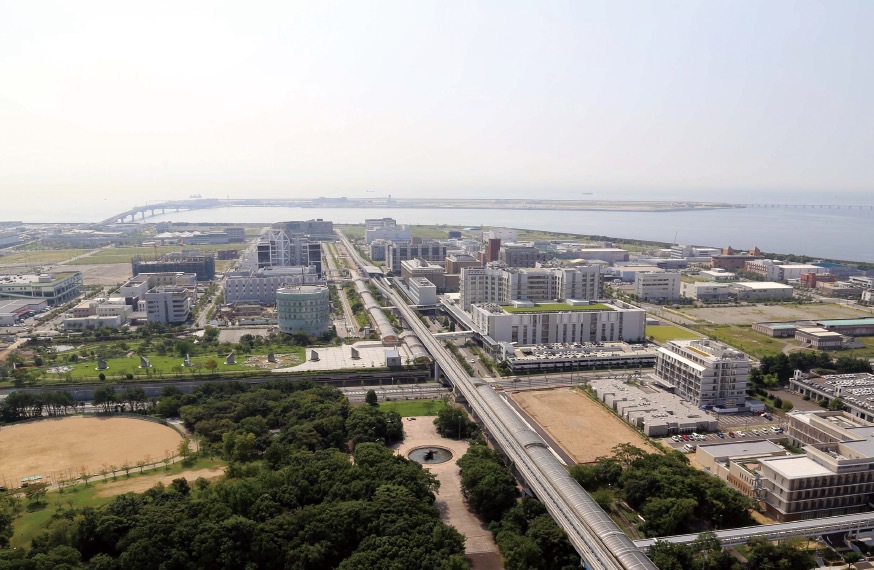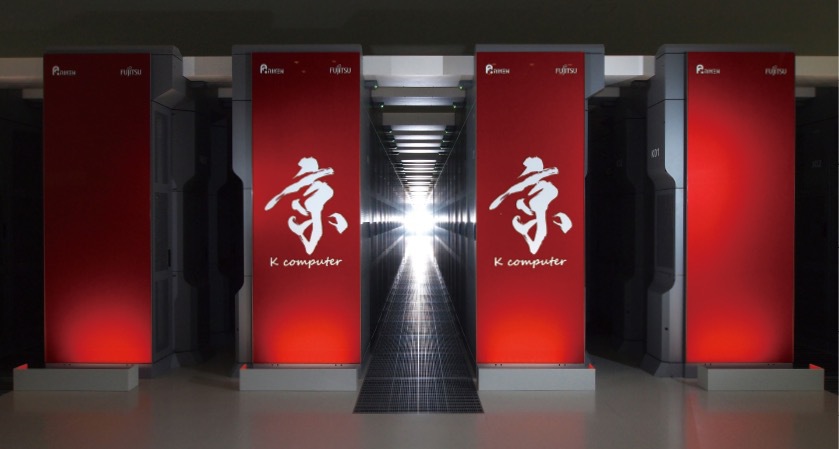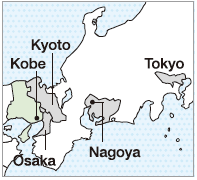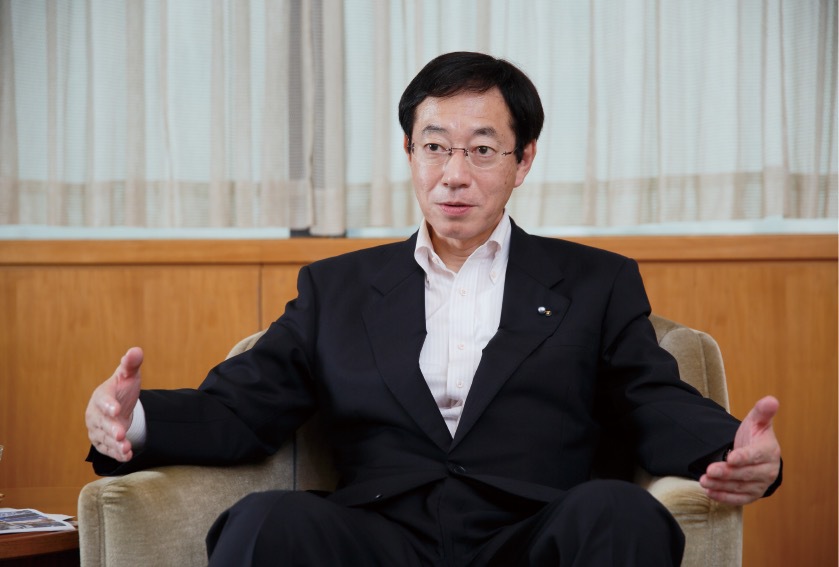As part of “Abenomics,” the economic policy of Prime Minister Shinzo Abe’s administration, theJapanese government is taking steps to promote direct investment in Japan by non-Japanese enterprises. In May 2014, Japan External Trade Organization (JETRO) held an “Invest in Japan” seminar in London, where Prime Minister Abe was joined by the governors of Hiroshima and Mie Prefectures and the mayors of Kobe and Fukuoka in making top-level appeals to potential investors. In this issue of We Are Tomodachi, we focus on the attractions of Mie Prefecture and of the city of Kobe.
Mie Prefecture: A Hub of Internationally Competitive Manufacturing
One of Mie Prefecture’s advantages is its location. It is situated near Japan’s geographical center, between Nagoya and Osaka, and it enjoys an ample, well-developed set of transportation links to Tokyo. The bullet train (shinkansen) currently connects Nagoya with the capital in 1 hour, 40 minutes; a new maglev train planned to begin running in 2027 will shorten this to around 40 minutes. In addition to motorways and railroads, it has an international trading port, Yokkaichi, and is close to Central Japan International Airport (Centrair), providing convenient international access.
Thanks in part to this good accessibility, Mie Prefecture has become a hub of industry with numerous manufacturing businesses. Over 40% of the prefecture’s manufacturing is in high-value-added fields like transportation equipment, semiconductors, electronic and electric devices, and pharmaceuticals. This industrial base makes it an attractive site for investment. Mie already boasts the highest rate of production per person in Japan, but according to a forecast by the Japan Center for Economic Research,Mie is also expected to have the highest rate of growth among Japan’s prefectures in terms of real production value over the 2011–2025 period.
As Mie’s particular strengths, Governor Eikei Suzuki, at age 39 the youngest governor in Japan, cites the prefecture’s concentration of internationally competitive industries and its clusters of small and medium-sized enterprises (SMEs) with advanced capabilities supporting the operations of major corporations. For example, the prefecture is home to part of Japan’s biggest cluster of aerospace industry firms; half of the airplanes and aircraft parts made in Japan are from the urban region of Mie near Nagoya, and the prefecture intends to further strengthen its presence in the aerospace sector.
Mie has also been progressing in the area of partnerships linking industry, academia, and the public sector. Mie University is promoting research activities conducted jointly with businesses, and its partners are not limited to Japanese firms but include companies from France and Taiwan. The prefecture also has a high level of expertise in the environmental sector based on its record of dealing with the air pollution from which it suffered in the past. Mie’s International Center for Environmental Technology Transfer has undertaken the transfer of technologies to 89 developing countries.
The prefectural government’s commitment to promoting direct investment from overseas is seen in the one-stop services that it provides across a wide range of areas, including assistance in selecting sites and handling the paperwork related to plant construction.
Mie Prefecture also offers generous grants to companies from overseas that make investments above a certain scale— a level of support greater than what is provided to domestic enterprises. It also has a “mileage system”— the first such program in Japan — that helps companies clear the scale requirement for grants even if their initial investment is not large by allowing them to add up investments made over a number of years. The prefecture is currently home to 52 foreign companies, and with these attractive conditions it hopes to substantially increase this number.
Industrial Investment Promotion Office, Mie Prefectural Government
2027 Linear Maglev Train
Utilizing superconducting magnetic levitation, the next-generation highspeed train will travel at a maximum of 505 kilometers per hour.
“Mileage System”
Companies can use the system to clear scale requirements for grants by adding up investments made over several years.
Basic Facts about Mie
Mie Prefecture has a population of about 1.86 million. It is located between the Chukyo (Nagoya) and Kansai (Kyoto, Osaka, Kobe) regions and has good access to both. It is a multifaceted prefecture, with such historical and traditional attractions as the Ise Shrine and pearl cultivation existing alongside some of the most cutting-edge technical industries in Japan.
Kobe: A City at the Leading Edge of Business and Medicine
The city of Kobe has overcome the destruction and hardship suffered during the Great Hanshin-Awaji Earthquake, which devastated this area in 1995 and more than 6,400 people died. Since then, Kobe has emerged as a center for research and development of the latest medical technologies. Kobe has a long history as one of Japan’s most renowned international port cities and a background in high-level manufacturing such as shipbuilding, steel, and machinery; more recently the city has also become a production center for train carriages and equipment for power generation. For residents and visitors alike, Kobe offers a wealth of dining choices, as represented by Kobe beef, abundant greenery, such as on Mount Rokk , a living environment near water, and one of the most convenient transportation systems in Japan. Under the guidance of Mayor Kizo Hisamoto, the city offers an excellent business environment, and a large number of foreign companies choose Kobe as their base of operations.
The Kobe Biomedical Innovation Cluster (KBIC), a medical research park that was founded in 1998 as part of a national project to improve the health and welfare of Japanese citizens, was designated by the Japanese government as a National Strategic Special Zone in April 2014. The KBIC currently hosts more than 270 research facilities, some of which are led by Nobel laureates, and related companies. Within the KBIC, the Institute of Biomedical Research and Innovation (IBRI), the Riken research institute, and other top-class research organizations have carried out projects in close cooperation with companies in and around Kobe. This collaboration has resulted in advances in such cutting-edge arenas as regenerative medicine and video-assisted procedures, as well as the development of more effective medicines. Also located in the KBIC is Riken’s K computer. Boasting one of the fastest processing speeds in the world, this supercomputer can be used to advance research in the life sciences.
Kobe has made focused efforts to attract foreign and foreign-affiliated companies—particularlythose in the medical industry. To lure companies to the area, Kobe is using public funds to cover 50% of office rent for three years for companies that have set up operations in the city. Building on an existing bilateral program with Hyogo Prefecture that subsidizes companies up to ¥2 million (approx. US$20,000) for one year, Kobe has decided to provide an additional subsidy of up to ¥9 million (approx.US$90,000).
Kobe has also applied broad tax incentives to lower the property tax burden of companies by as much as 90%, with companies establishing offices in the city during the three-year period from 2014 to 2016 able to have their tax burden lowered for a maximum of ten years. According to the municipal office overlooking the city’s industrial parks, this program provides one of the largest tax deductions for companies in Japan.
Over the past few years, more than 240 foreign and foreign-affiliated firms have established operations in Kobe. These include Airbus Helicopters, which established a base for construction and training in Kobe in 2010, and the major Belgian materials technology firm Umicore, which set up a plant and a research facility in 2011.
In addition to its excellent business environment, Kobe is also well known for its cosmopolitanatmosphere that allows visitors from overseas to comfortably and easily integrate into the localcommunity. The city features eight international schools that provide Western-style and other types of education to both local children and those of foreign residents. Kobe is also noted for its livability and pleasant environment.
“Ten years from now,” says Mayor Hisamoto, “Kobe will have the Exascale supercomputer, which will be capable of processing 100 times more information than K. This will result in a considerable boost in the level of research being conducted as well as work to advance medical care services. The number of medical-related facilities and firms establishing bases here is increasing nearly each month and is drawing other companies and organizations to Kobe. As a city, we want to attract investments in all fields of industry—not just the medical-related sphere. I would like to take every opportunity to show the support system our city has developed for both foreign and domestic firms.”
Kobe Enterprise Promotion Bureau
Basic Facts about Kobe
Kobe has a population of 1.54 million. Together with Osaka and Kyoto, it is one of the three major cities in the Kansai region. Like Yokohama, Kobe originally developed as a city supported by its port and trade. The city suffered massive damage during the Great Hanshin-Awaji Earthquake in January 1995, but managed to rebuild quickly. In 2008, Kobe became the first city in Asia to be designated a UNESCO City of Design.































































































































